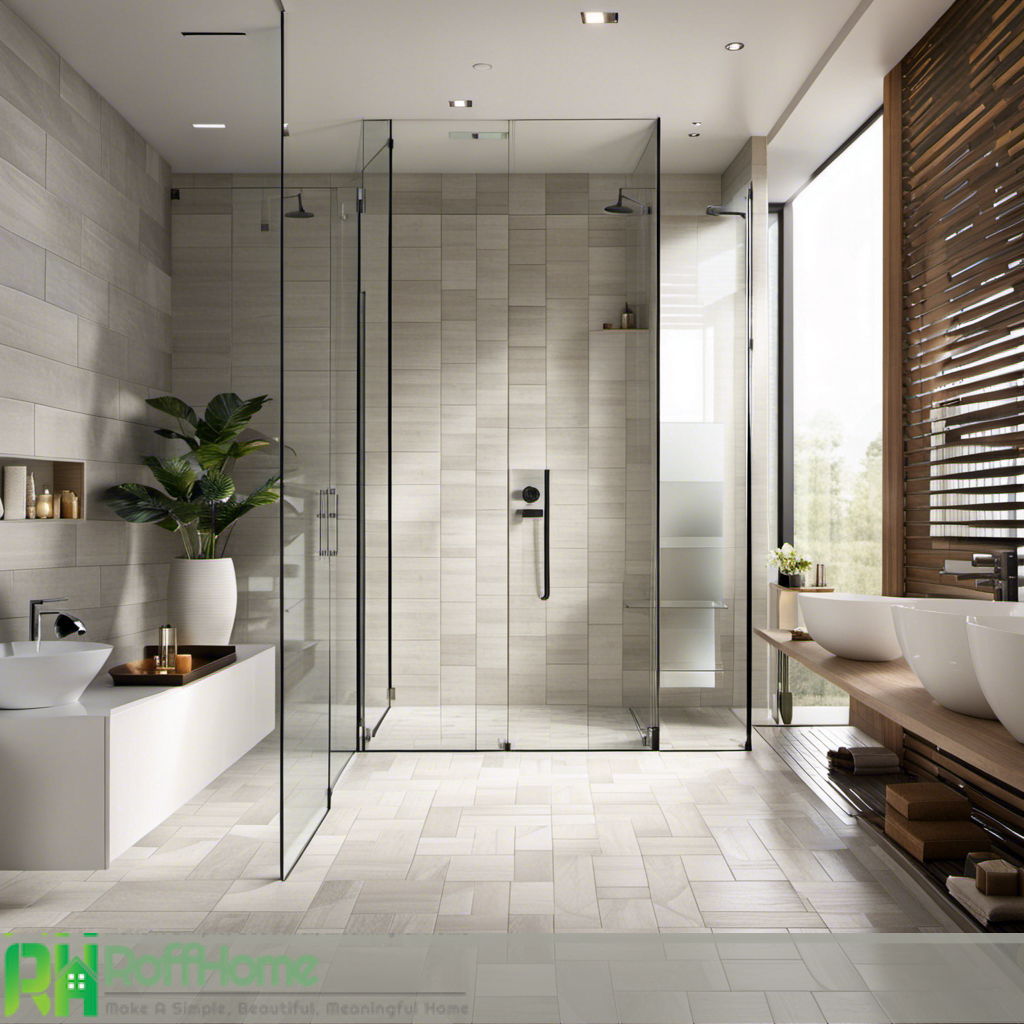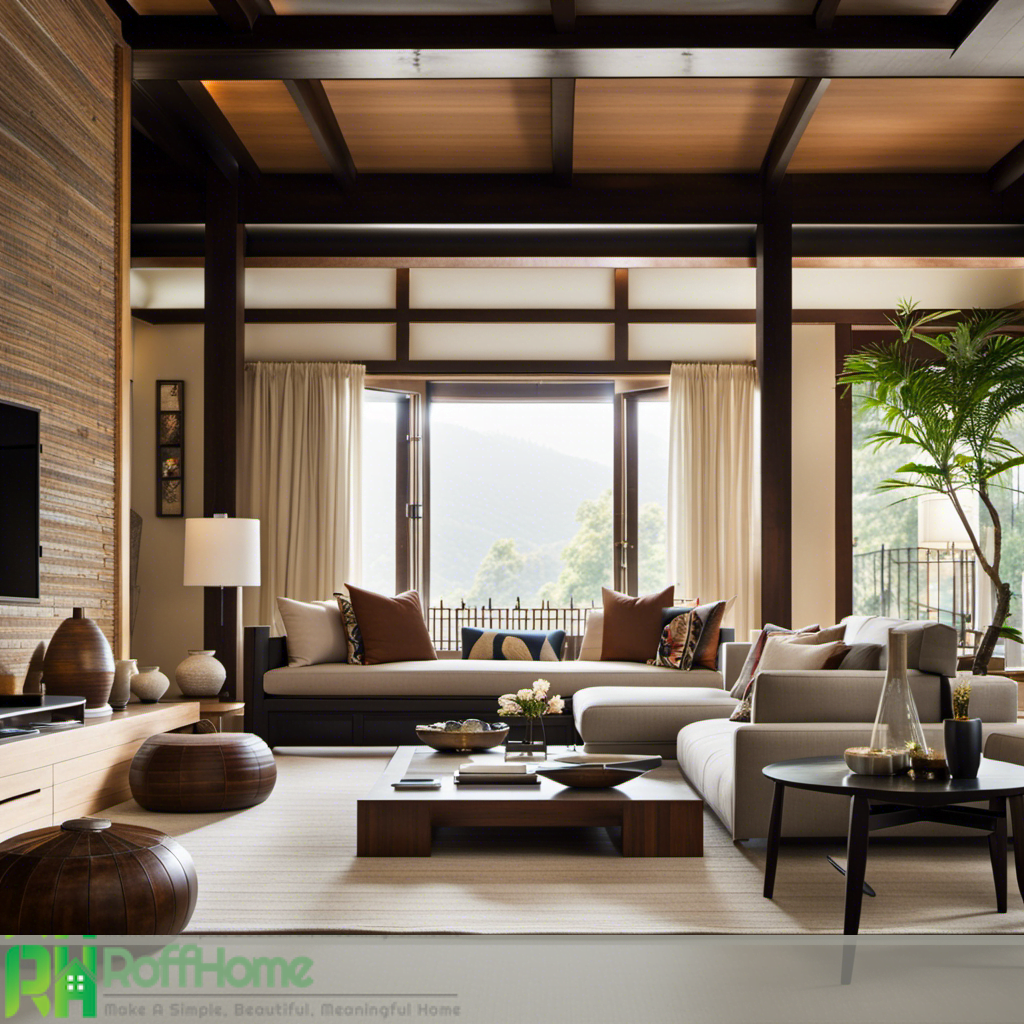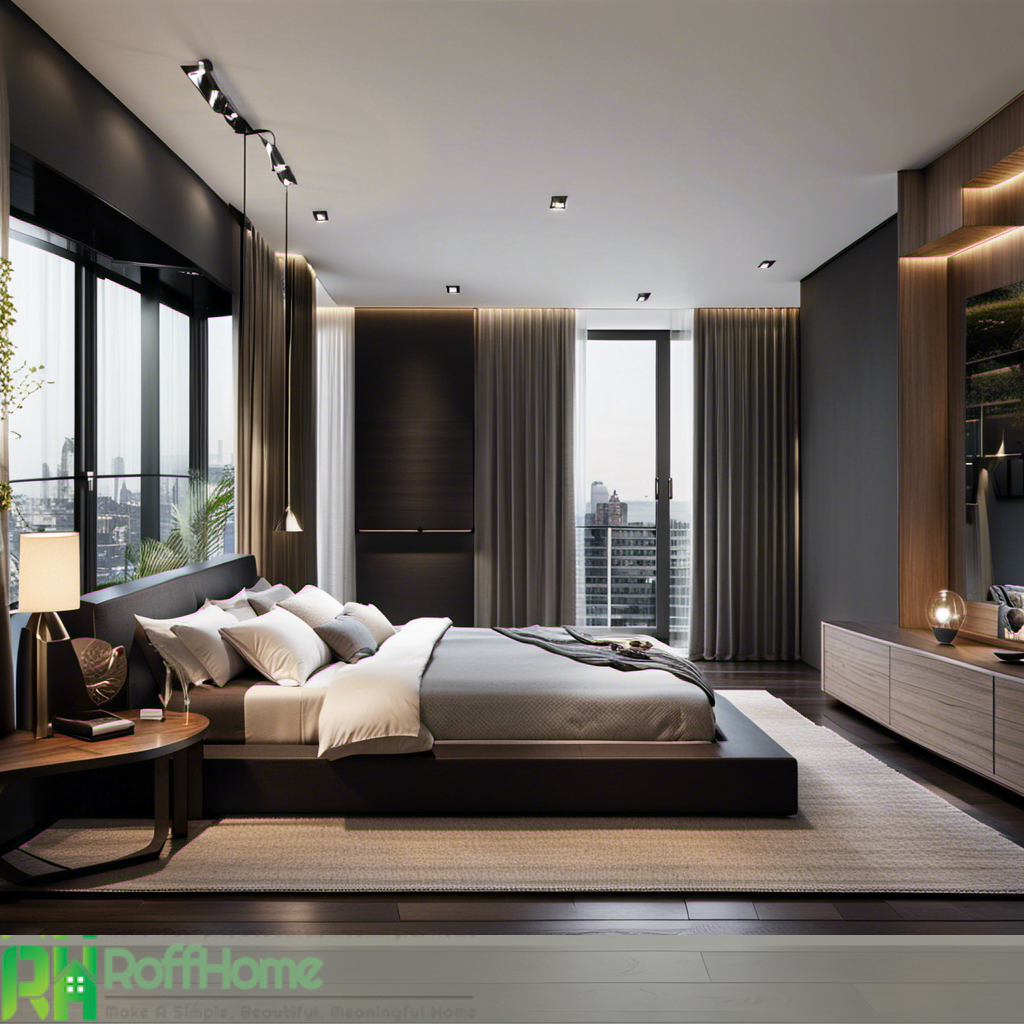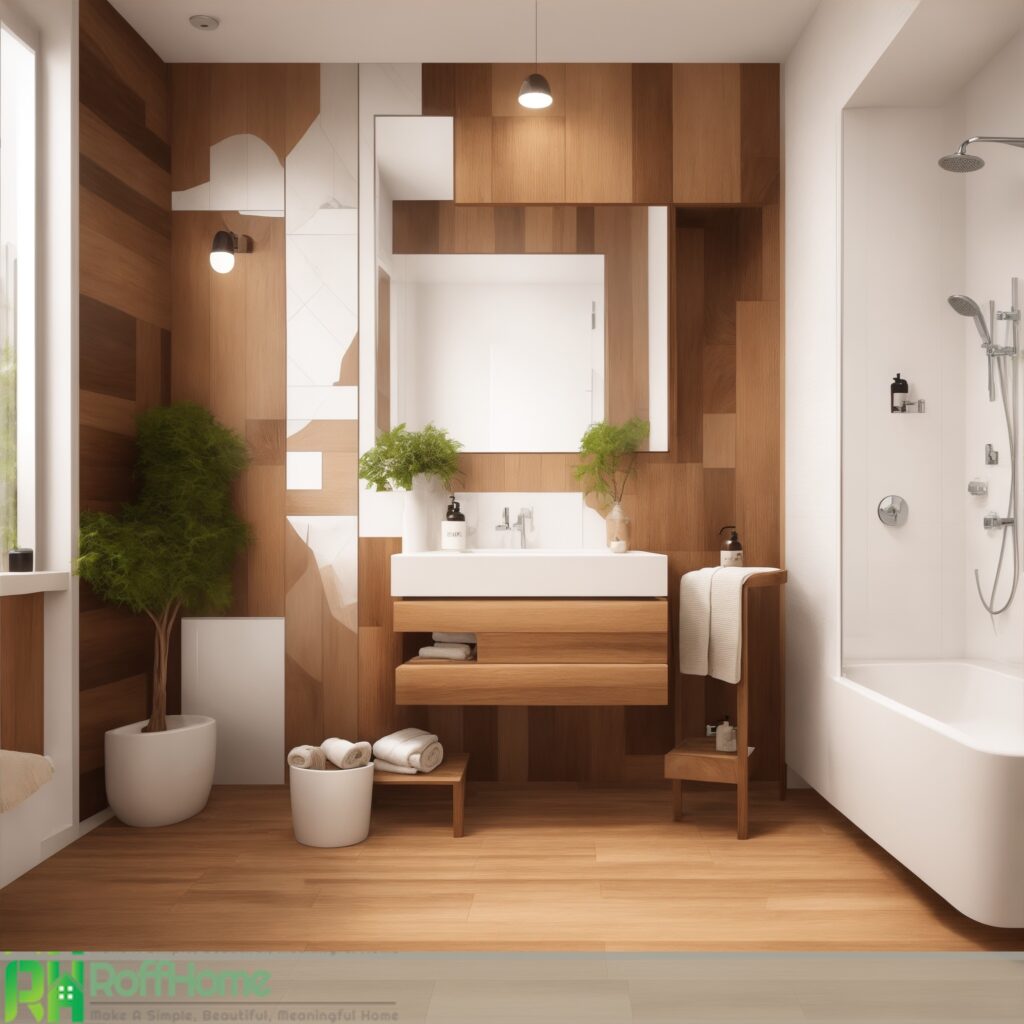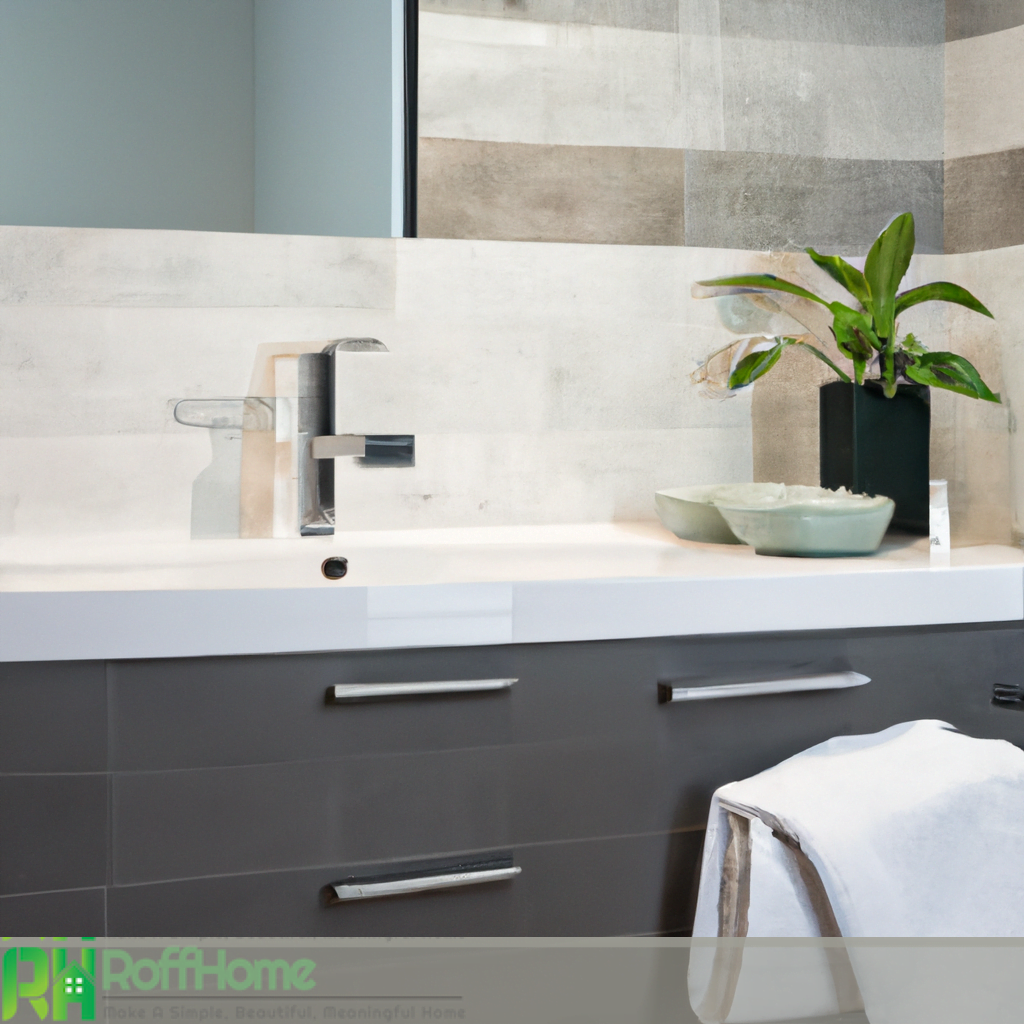Effortless Style: Laundry Room Wood Countertop Ideas for Functional Elegance
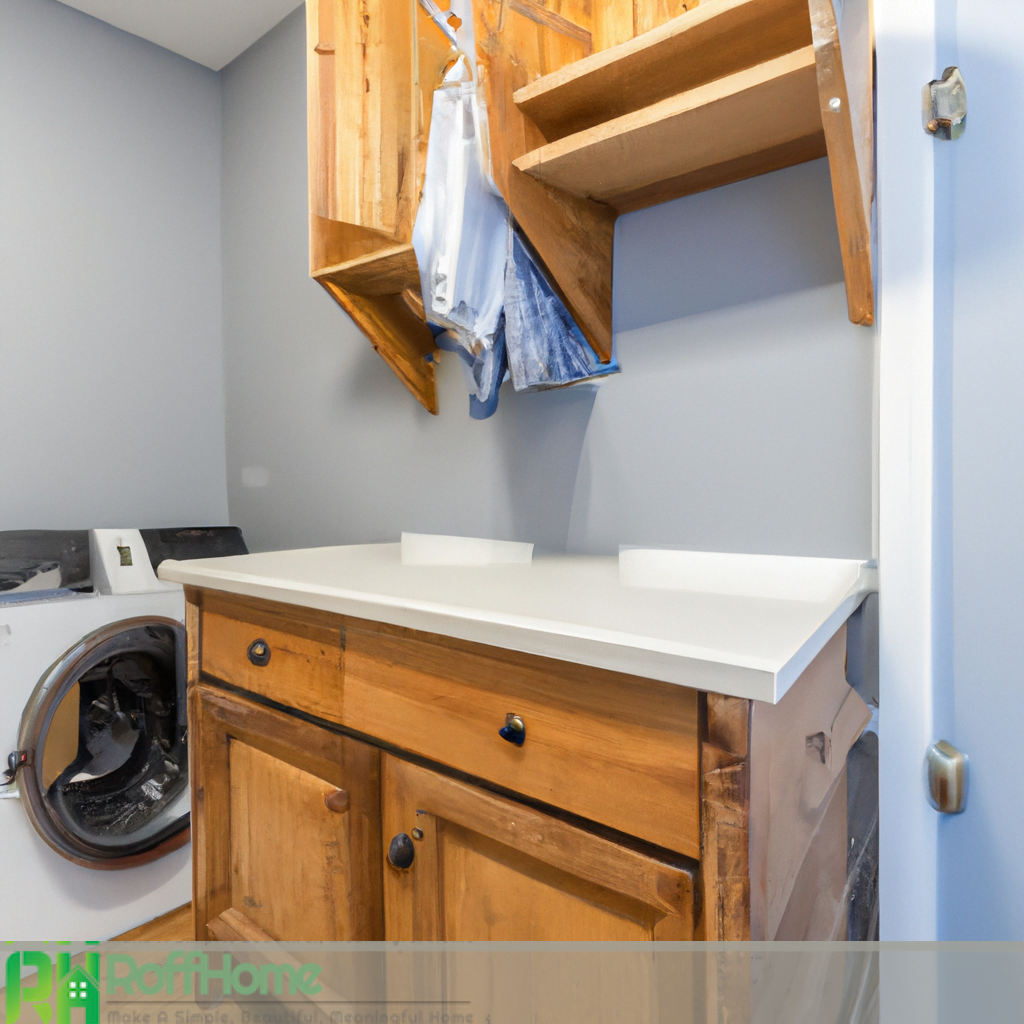
A laundry room wood countertop brings a natural warmth and beauty to the space, elevating its visual appeal. It serves as a focal point, adding a touch of elegance and sophistication to an often-overlooked room. The choice of wood types, such as oak, maple, or bamboo, can further enhance the desired style and theme of the room, whether it’s rustic, modern, or traditional.
Beyond aesthetics, installing a wood countertop in the laundry room also provides functional benefits. It offers a smooth and durable surface for various tasks such as folding clothes, sorting laundry, and organizing supplies. Additionally, the countertop can be customized to incorporate storage solutions, such as shelves or cabinets, optimizing space and keeping essentials within reach.
Proper maintenance is crucial to ensure longevity and durability of a wood countertop in the laundry room. Regular care, including gentle cleaning and occasional resealing, helps protect the wood from moisture, stains, and scratches, preserving its beauty over time. Following care tips and techniques specific to wood countertops will help maintain their natural charm and extend their lifespan.
Whether undertaking a complete laundry room makeover or simply looking for a small upgrade, a wood countertop offers a timeless and functional solution. With its blend of style and practicality, a laundry room wood countertop can elevate the overall look and functionality of the space, making laundry tasks a more enjoyable experience.
Trends for Modern Laundry Room Wood Countertop Design
The laundry room has evolved from a functional space to a stylish and functional area in modern interior design. A significant element that has contributed to this transformation is wood countertops. Wood countertops are gaining popularity in modern laundry room design due to their versatility, natural appeal, and ability to add warmth and sophistication to the space.
One prominent modern laundry room design trend is incorporating sustainable and eco-friendly materials. Homeowners are increasingly choosing wood countertops made from reclaimed or responsibly sourced wood. This environmentally conscious approach adds a unique character to the laundry room and aligns with the growing emphasis on sustainable living.
Another trend is the integration of innovative storage solutions. Modern laundry rooms often lack ample space, making efficient storage a necessity. Wood countertops offer opportunities to incorporate built-in shelves, cabinets, or drawers, providing essential storage for laundry supplies, cleaning products, and other household items. This streamlined design helps maintain a clutter-free and organized space.
Regarding aesthetics, contrasting elements are prevalent in modern laundry room design. Combining light-colored wood countertops with darker cabinets creates an eye-catching visual appeal. This contrast enhances the overall design and complements various color schemes and styles, making it adaptable to different interior preferences.
Wood countertops come in various finishes and edge profiles, allowing for a customized look that suits individual tastes. Whether it’s a sleek and contemporary edge or a rustic and distressed finish, homeowners can tailor their laundry room to their desired aesthetic.
Functionality remains a crucial aspect of modern laundry room design, and wood countertops also deliver this aspect. Wood’s smooth and durable surface allows for easy laundry sorting, folding, and even accommodating additional tasks like sewing or crafting. This versatility makes the laundry room multi-functional, catering to various household needs.
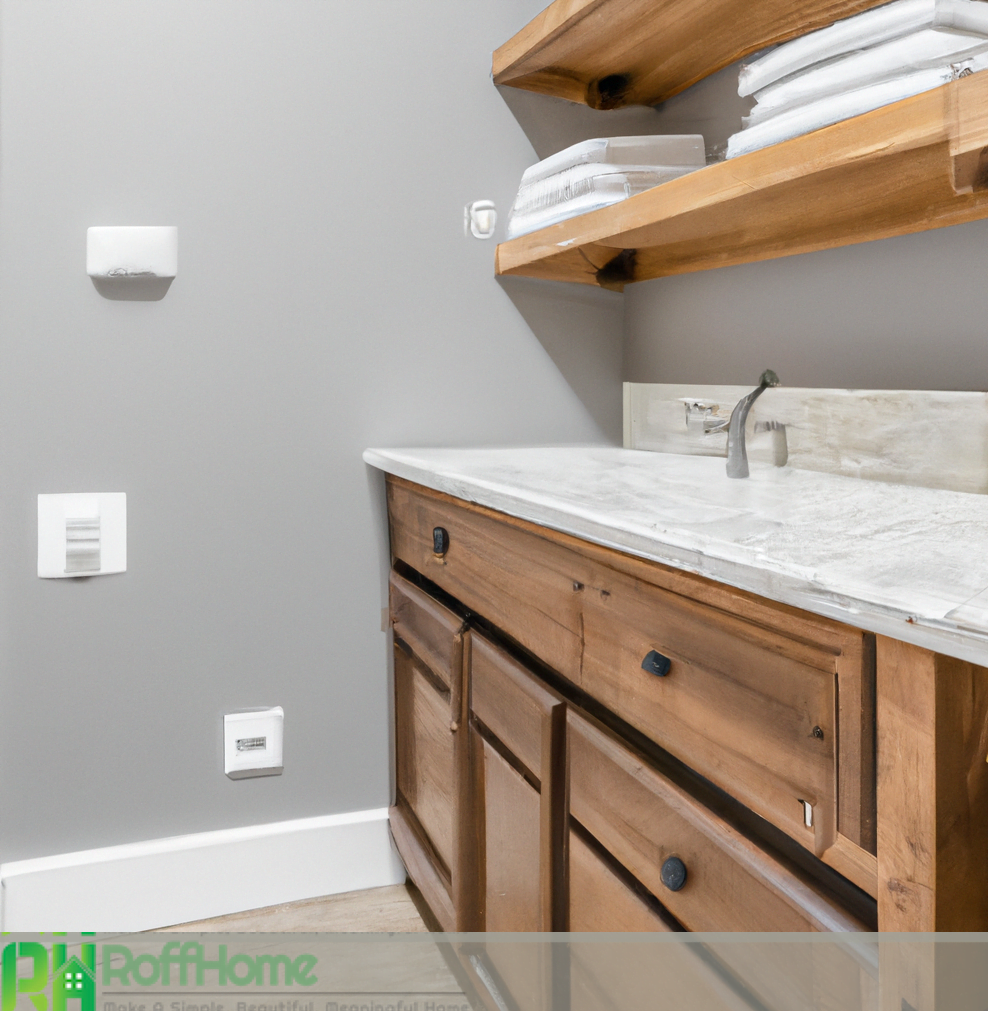
Design Ideas for Incorporating a Laundry Room Wood Countertop
When it comes to incorporating a wood countertop in your laundry room, there are numerous design ideas to consider that can enhance the space’s functionality and aesthetics. Here are some inspiring concepts to help you create a beautiful and practical laundry room:
- Natural and Rustic Charm: Embrace the inherent beauty of wood by selecting a countertop with a natural finish. This brings out the unique grain patterns and textures, adding a rustic and charming touch to the laundry room. Pair it with earthy tones and natural materials for a cohesive look.
- Contrasting Elements: Create visual interest by combining different materials in your laundry room design. Pair a wood countertop with sleek, modern cabinets or contrasting surfaces like stainless steel or concrete. The juxtaposition of textures adds a contemporary and dynamic feel to the space.
- Floating or Extended Countertops: Maximize your workspace by installing a floating or extended wood countertop. This design allows additional storage options beneath the countertop, such as floating shelves or cabinets. It creates a seamless and streamlined look while providing extra functionality.
- Integrated Sink: Consider incorporating a sink into your wood countertop design for convenience. This allows you to tackle handwashing or pre-soaking tasks directly in the laundry room, making the space more versatile and efficient.
- Multi-Purpose Countertop: Make your wood countertop serve multiple functions by integrating a foldable ironing board or a built-in folding station. This clever design idea optimizes space and eliminates needing a separate ironing area.
- Color Accents: Use the wood countertop to introduce a pop of color to the laundry room. Choose a vibrant or contrasting hue for the countertop surface or colorful cabinetry underneath. This adds personality and visual interest to the space.
- Lighting Enhancements: Illuminate your wood countertop with strategically placed lighting fixtures. Under-cabinet lighting or pendant lights above the countertop provide functional task lighting and create a warm and inviting ambiance in the laundry room.
- Open Shelving Display: Consider installing open shelves above or near the wood countertop instead of traditional upper cabinets. This allows for easy access to frequently used items and provides an opportunity to showcase decorative elements or organized storage containers, adding a touch of style to the room.
- Backsplash Integration: Extend the wood element by incorporating a matching wood backsplash. This cohesive design creates a visually unified space while protecting the walls from splashes and spills.
- Personalized Touches: Customize your wood countertop with personal engravings, patterns, or inlays. This adds a unique and sentimental touch to the laundry room and transforms the countertop into functional art.
Choosing the Right Type of Wood for Laundry Room Countertop
Choosing the right type of wood for your laundry room countertop is a crucial decision that affects the space’s aesthetic appeal and functionality.
- Durability and Moisture Resistance: Since the laundry room is a high-moisture environment, it is important to the choose a wood species that is durable and moisture-resistant. Hardwoods like oak, maple, and teak are excellent choices as they are naturally resistant to water and less prone to warping or damage.
- Maintenance Requirements: Different wood species have varying maintenance needs. Consider the level of upkeep you’re willing to commit to. For example, some woods may require regular sealing or oiling to maintain their appearance and protect them from water damage.
- Aesthetics and Style: The visual appeal of wood is an important consideration in your laundry room design. Consider the existing color scheme and style of your laundry room. Lighter woods like maple or birch can create a modern and airy feel, while darker woods like walnut or cherry lend a more traditional or rustic look.
- Stain and Finish Compatibility: If you plan to stain or apply a finish to your wood countertop, ensure that the wood species you choose is receptive to these treatments. Some woods take stains or finish better than others, allowing you to achieve the desired color or sheen.
- Budget Considerations: The cost of different wood species can vary significantly. Exotic or rare woods may have a higher price tag, while more common hardwoods can be more budget-friendly. Consider your budget and prioritize the wood species that best aligns with your financial considerations.
- Sustainability: If you prioritize eco-friendly options, consider choosing sustainably sourced wood or certified by reputable organizations such as the Forest Stewardship Council (FSC). Reclaimed wood or rapidly renewable options like bamboo are also environmentally conscious choices.
- Availability: Some wood species may be more readily available in your area than others. Check with local suppliers or manufacturers to ensure your chosen wood is accessible and easy to obtain.
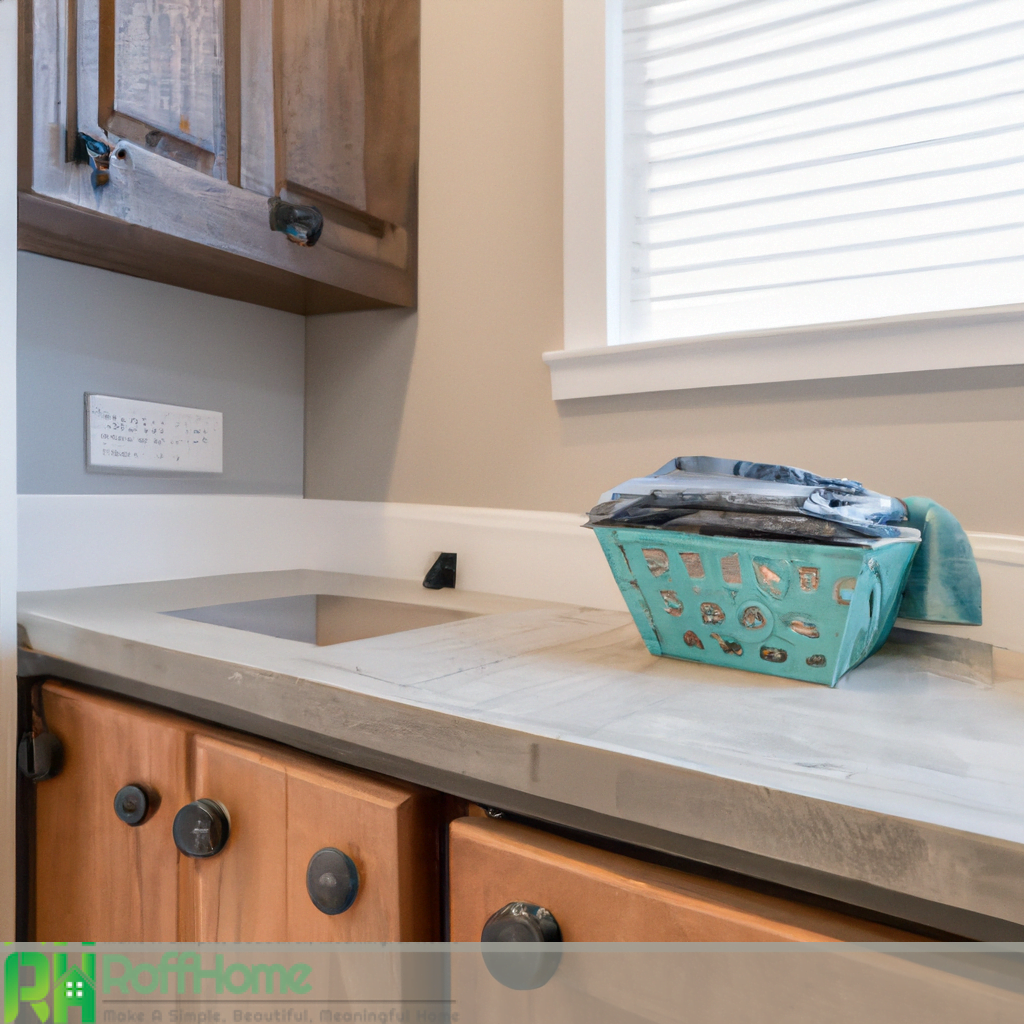
Comparing Wood Countertops to Other Materials for Laundry Room Surfaces
When choosing the ideal surface material for your laundry room, it’s essential to consider various options and compare their characteristics. Here, we will compare wood countertops to other materials commonly used for laundry room surfaces:
- Wood Countertops: Wood countertops offer a warm and natural aesthetic that adds a touch of the elegance to the laundry room. They are durable, with hardwood options like oak, maple, and teak providing excellent resistance to moisture and wear. Wood is also relatively forgiving, as minor scratches or dents can be sanded and refinished. Additionally, wood countertops can be customized with various stains and finishes to match your desired style.
- Laminate Countertops: Laminate countertops are a popular and cost-effective choice for laundry room surfaces. They are made of layers of synthetic materials, typically with a high-pressure laminate surface. Laminate is resistant to stains and scratches, making it easy to clean and maintain. It also comes in various colors, patterns, and textures, allowing for versatile design options. However, laminate may offer a different level of durability than wood or other materials, as it can be prone to chipping or peeling over time.
- Quartz Countertops: Quartz countertops are composed of engineered stone from crushed quartz mixed with resin. They are highly durable, resistant to stains, scratches, making them a popular choice for high-traffic areas like laundry rooms. Quartz countertops are low maintenance, requiring minimal cleaning and no sealing. They come in a wide range of colors including options that mimic look of natural stone. However, quartz countertops tend to be more expensive than wood or laminate.
- Stainless Steel Countertops: The stainless steel countertops offer a sleek and industrial look that is highly durable and resistant to heat, stains, and moisture. They are easy to clean and maintain simple wiping and occasionally stainless steel cleaner application. Stainless steel countertops are ideal for laundry rooms with heavy usage or when a modern aesthetic is desired. However, they may be more prone to scratches and dents, and some people find them noisier than other materials.
How to Design a Functional and Stylish Laundry Room with a Wood Countertop
Designing a functional and stylish laundry room with a wood countertop requires careful planning and consideration. Here are some key steps to create a space that balances both practicality and aesthetics:
- Assess Your Needs: Evaluate your laundry routine and identify your specific needs. Consider storage requirements, folding space, ironing needs, and any additional tasks you perform in the laundry room. This will help you determine the layout and functionality of the space.
Optimize Space:
- Make the most available space by incorporating clever storage solutions.
- Install upper cabinets or open shelves above the wood countertop to keep laundry essentials within reach.
- Add built-in hampers, pull-out drying racks, or overhead storage to maximize organization and efficiency.
Choose the Right Wood Countertop:
- Select a wood species that is durable and moisture-resistant, such as oak or maple.
- Consider the desired style and finish of the countertop to complement your overall design scheme.
- Ensure the wood is properly sealed to protect it from water damage and stains.
- Incorporate a Sink: Include a sink in your laundry room design if space permits. A sink is invaluable for handwashing delicate items or pre-soaking stained garments. Place the sink adjacent to the wood countertop for easy access and seamless functionality.
- Lighting Considerations: Adequate lighting is essential for a functional laundry room. Ensure the wood countertop is well-lit, especially in the task areas like the folding station or sink. Consider installing under-cabinet lighting or pendant lights to provide focused illumination.
Add Functional Accessories:
- Enhance the functionality of your laundry room with accessories that make chores easier.
- Install a retractable ironing board within a cabinet for convenient ironing.
- Consider a hanging rod for air-drying clothes or hooks for hanging laundry bags or cleaning tools.
Utilize Color and Décor:
- Inject personality and style into the laundry room by incorporating colors and decorative elements.
- Choose paint colors or wallpapers that create a bright and inviting atmosphere.
- Add stylish storage containers, artwork, or plants to enhance the visual appeal of the space.
- Maintain an Organized Space: Regularly declutter and organize your laundry room to maintain its functionality. Keep countertops clear by utilizing storage solutions for detergents, fabric softeners, and other supplies. Establish a system for sorting and storing clean and dirty laundry efficiently.
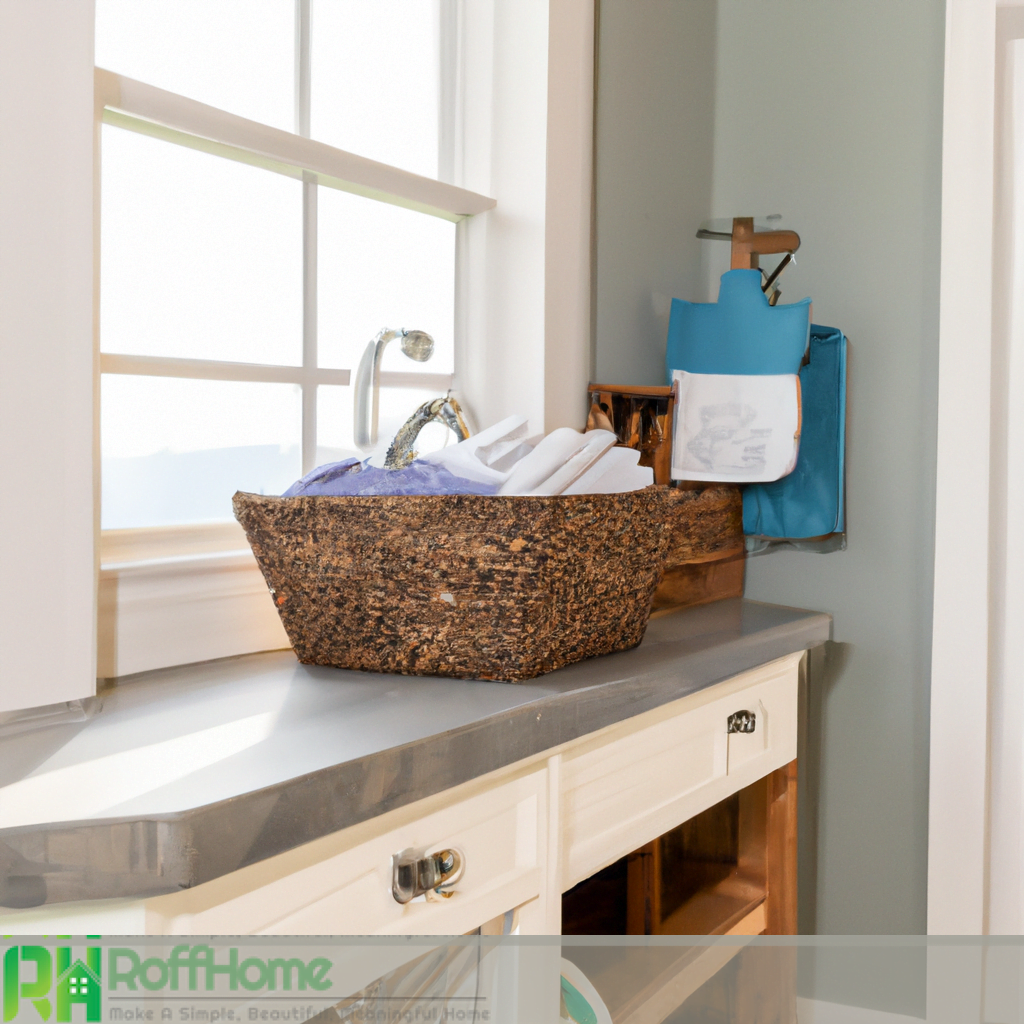
Budget-Friendly Alternatives to Solid Wood Countertops for Laundry Room
If you’re working with a limited budget, several budget-friendly alternatives to solid wood countertops can still provide an attractive and functional surface for your laundry room. Consider the following options:
- Laminate Countertops: Laminate countertops are a popular and cost-effective choice. They are available in a wide range of colors, patterns, and finishes, including wood grain designs that can mimic the look of real wood. Laminate countertops are durable, easy to clean, and resistant to stains and scratches. They are also relatively low maintenance compared to solid wood.
- Butcher Block: Butcher block countertops offer a warm and natural appearance similar to solid wood but at a lower cost. Made from strips of wood bonded together, they provide a durable and versatile surface for laundry room tasks. Butcher block countertops require regular sealing to protect them from moisture, but they can be an affordable alternative to solid wood.
- Tile Countertops: Tile countertops are a budget-friendly option that allows for creativity and customization. Ceramic or porcelain tiles can be arranged in various patterns and colors to the create a unique look for your laundry room. While not as warm and natural-looking as wood, tile countertops are durable, moisture-resistant, and easy to clean.
- Solid Surface Countertops: The Solid surface countertops, such as those made from acrylic or polyester materials, offer a budget-friendly alternative to solid wood. They can mimic the appearance of natural materials, including wood while providing a non-porous, low-maintenance surface.
- Concrete Countertops: Concrete countertops are a versatile and affordable option for a laundry room. They can be custom-made to fit your space and stained or tinted to resemble wood or other materials. Concrete countertops are durable, heat-resistant, and relatively low-maintenance.
Pros and Cons of Installing a Wood Countertop in a Laundry Room
Installing a wood countertop in your laundry room can be stylish and practical, but it’s important to consider pros and cons before deciding. Here are the advantages and disadvantages of installing a wood countertop in the laundry room:
Pros:
- Aesthetics: Wood countertops add warmth and natural beauty to the laundry room. They bring a touch of elegance and can complement various design styles, from rustic to modern.
- Durability: High-quality hardwoods like oak, maple, or teak are known for their durability. When properly maintained, wood countertops can withstand the demands of daily use in the laundry room and last for many years.
- Customization: Wood countertops can be customized to fit your specific needs and preferences. They can be cut, shaped, and finished to achieve the desired look and size, making them versatile.
- Repairable: Unlike other materials, wood countertops can be repaired if they get scratched, dented, or damaged. Minor imperfections can often be sanded out and refinished, restoring the countertop to its original condition.
- Warmth: Wood has a natural warmth that can create a cozy and the inviting atmosphere in the laundry room. It can add comfort and make the space more pleasant to work in.
Cons:
- Maintenance: Wood countertops require regular maintenance to keep them in good condition. They must be sealed or oiled periodically to protect against moisture, stains, and bacteria growth. Failure to maintain the wood properly can lead to damage or warping.
- Sensitivity to Moisture: Wood is naturally sensitive to moisture, which can cause swelling, warping, or even mold growth if not properly sealed and protected. Extra care should be taken to keep the countertop dry and avoid prolonged exposure to water.
- Potential for Staining: Wood is more susceptible to staining than other countertop materials.
- Cost: Wood countertops can be more expensive than some other materials depending on the wood species and quality. Exotic or rare wood species may come with a higher price tag, affecting the overall budget for your laundry room project.
Maintenance and Care Tips for Wood Countertops in the Laundry Room
Proper maintenance and the care are essential to ensure longevity and beauty of wood countertops in the laundry room. Here are some important tips to help you maintain and care for your wood countertop:
Regular Cleaning:
- Clean your wood countertop regularly to remove dirt, spills, or debris.
- Use a soft cloth or sponge, mild dish soap, and warm water to wipe down surface.
- The abrasive cleaners or scouring pads that can scratch the wood.
- Immediate Spill Cleanup: Wipe up spills immediately to prevent staining or damage to the wood. Liquids such as bleach, detergent, or harsh chemicals should be wiped off promptly, as they can penetrate the wood and cause discoloration.
- Avoid Excessive Moisture: Wood is sensitive to moisture, so avoid leaving wet items on the countertop for extended periods. Wipe up any water spills or standing moisture promptly. To protect the wood surface, use coasters or trivets under hot or wet items like pots, pans, or laundry baskets.
- Sealing and Finishing: Depending on the type of wood used, your countertop may require periodic sealing or finishing to protect it from moisture. Follow the manufacturer’s recommendations for the specific type of sealant or finish to apply. This will help maintain the wood’s natural beauty and enhance its resistance to stains and water damage.
- Cutting Boards and Heat Protection: Use cutting boards or mats when preparing food or using sharp utensils on the wood countertop. This will protect the surface from scratches and cuts. Additionally, use trivets or hot pads under hot objects to prevent heat damage to the wood.
- Regular Maintenance: Inspect your wood countertop for any signs of wear, such as scratches, or worn-out finishes. Sanding and refinishing the countertop may be necessary to restore its appearance and the protect it from further damage.
- Avoid Harsh Chemicals: Avoid using harsh chemicals, bleach, or abrasive cleaners on your wood countertop. They can strip the protective finish, cause discoloration, or damage the wood surface. Instead, use mild, non-abrasive cleaners specifically designed for wood.
- Oiling or Conditioning: Depending on the wood species and finish, your countertop may benefit from occasional oiling or conditioning. This helps to maintain the wood’s moisture balance and protect it from drying out or cracking. Follow the manufacturer’s guidelines for the appropriate oil or conditioner to use.
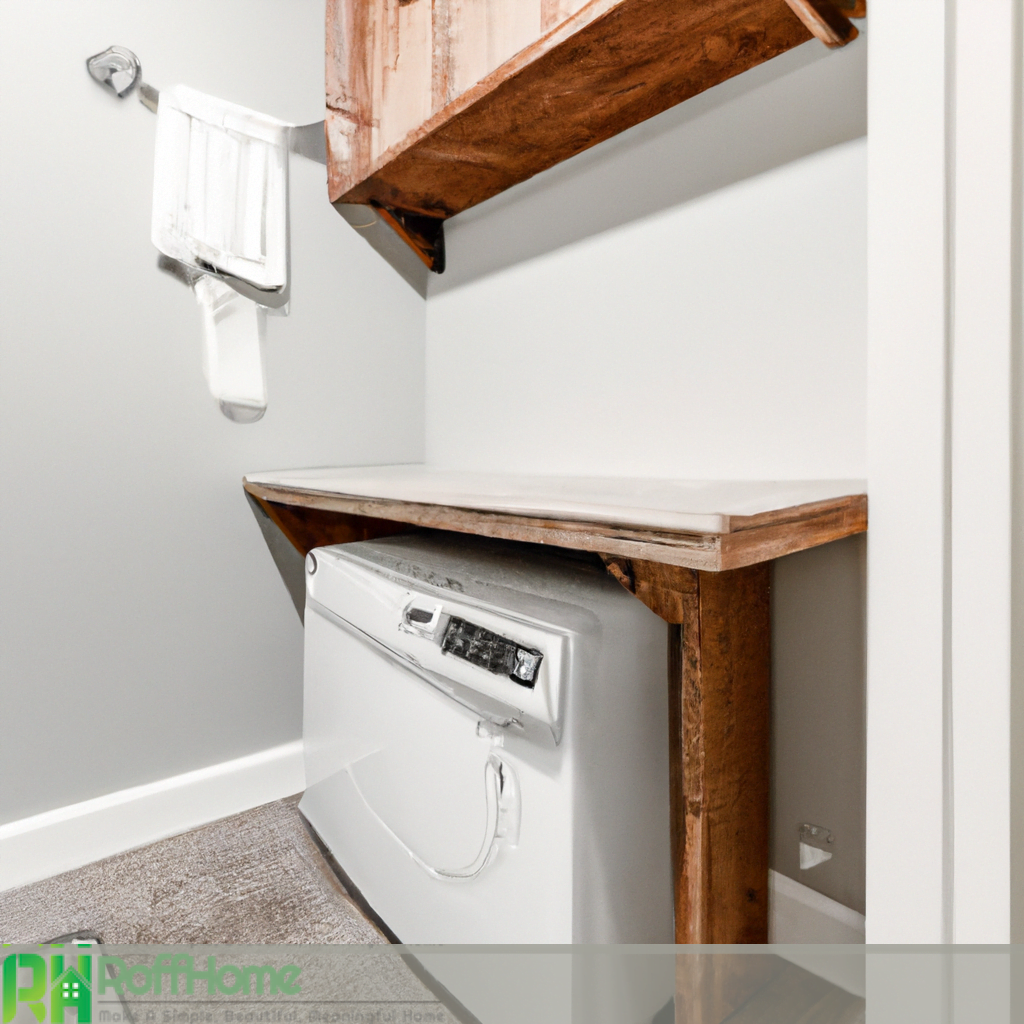
Benefits of Having a Wood Countertop in Laundry Room
A wood countertop in your laundry room offers numerous benefits that contribute to its functionality and aesthetic appeal. Here are some key advantages of choosing a wood countertop for your laundry room:
- Natural Beauty: Wood countertops add warmth, charm, and natural beauty to the laundry room. The unique grain patterns and varying wood hues create a visually pleasing and inviting atmosphere.
- Versatile Design Options: Wood countertops come in a wide range of wood species, each with distinct characteristics. This allows you to choose a wood that matches your desired style and complements the overall design of your laundry room, whether modern, rustic, or traditional.
- Durability: High-quality wood countertops, such as those made from hardwoods like oak, maple, or teak, are highly durable and can withstand rigors of daily use in the laundry room. They resist scratches, dents, and stains, making them suitable for folding, ironing, and other laundry-related tasks.
- Longevity: When properly maintained, wood countertops have excellent longevity. Regular care and occasional refinishing can last for many years, making them a worthwhile investment for your laundry room.
- Moisture Resistance: Many hardwoods used for countertops, such as maple and teak, have inherent moisture-resistant properties. This makes them suitable for environments prone to humidity and occasional water exposure, such as laundry rooms.
- Natural Antibacterial Properties: Some wood species, such as walnut, have natural antibacterial properties, which can help inhibit the growth of bacteria on the countertop surface. This can be particularly advantageous in a space where hygiene is important, like the laundry room.
- Easy Maintenance: Wood countertops are relatively easy to maintain. Regular cleaning with mild soap and the water and periodic sealing and oiling will help preserve their appearance and protect them from moisture and stains.
- Repairability: Unlike other countertop materials, wood can be repaired if scratched, dented, or damaged. Minor imperfections can often be sanded out and refinished, allowing the countertop to regain its original beauty.
- Eco-Friendly Option: Wood is a renewable and sustainable material, making it an the environmentally friendly choice for your laundry room countertop. Opting for wood from responsibly managed forests further enhances its eco-friendly profile.
In conclusion, a wood countertop in the laundry room offers a perfect combination of functionality and aesthetics. With proper care and maintenance, a wood countertop can enhance your laundry room space’s overall appeal and functionality.

